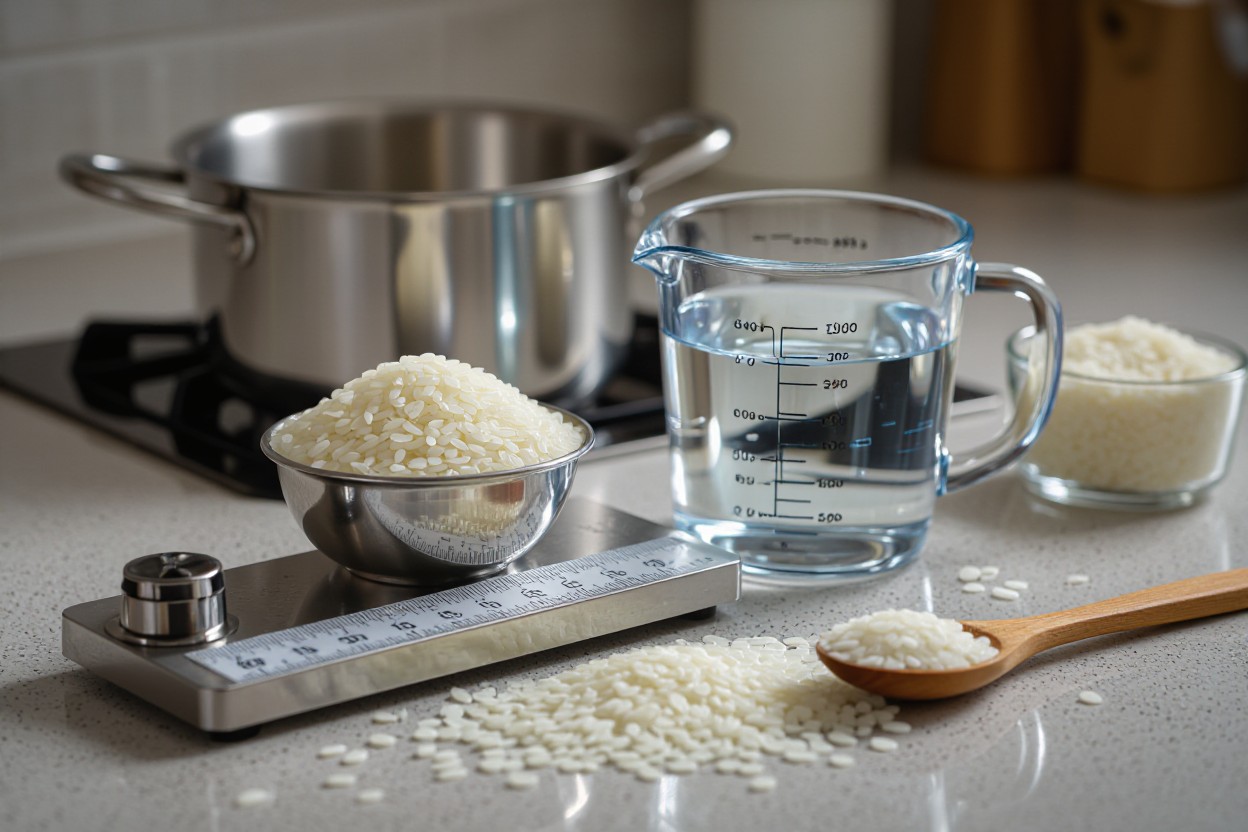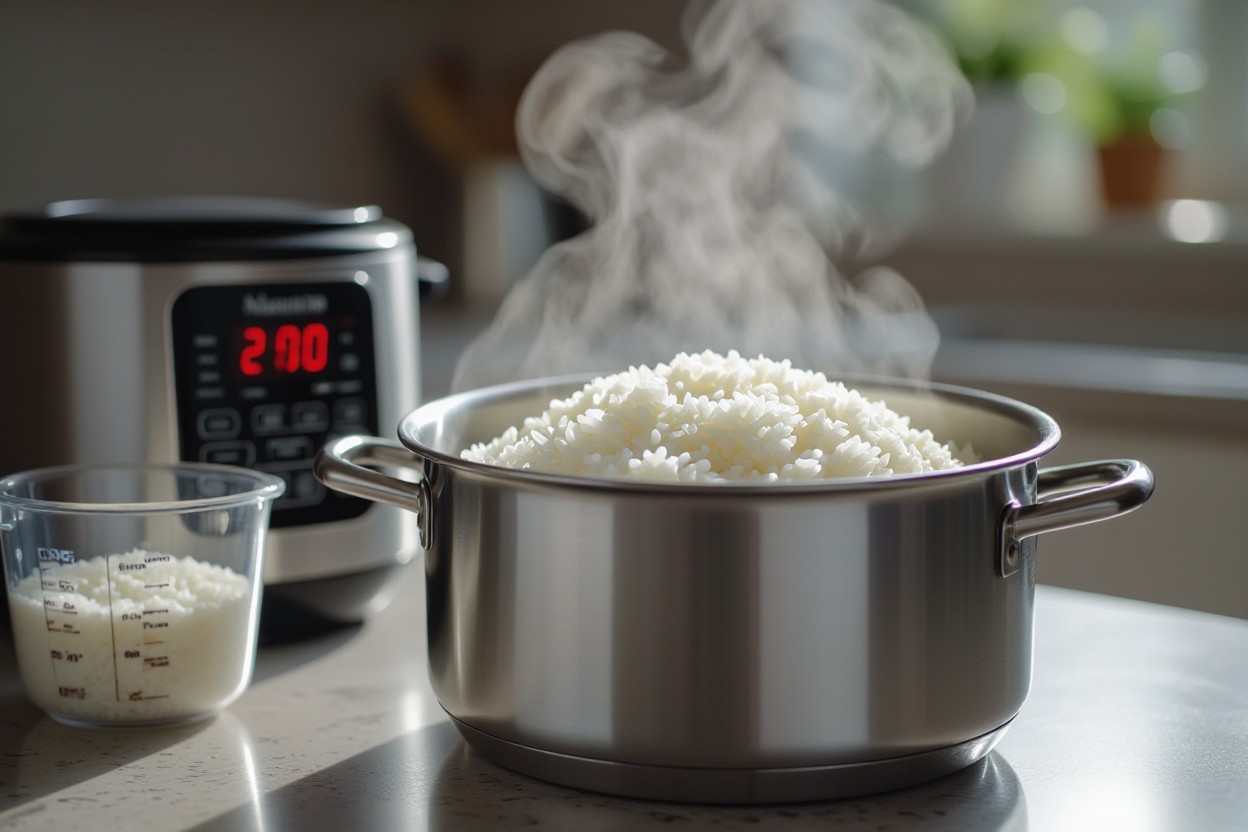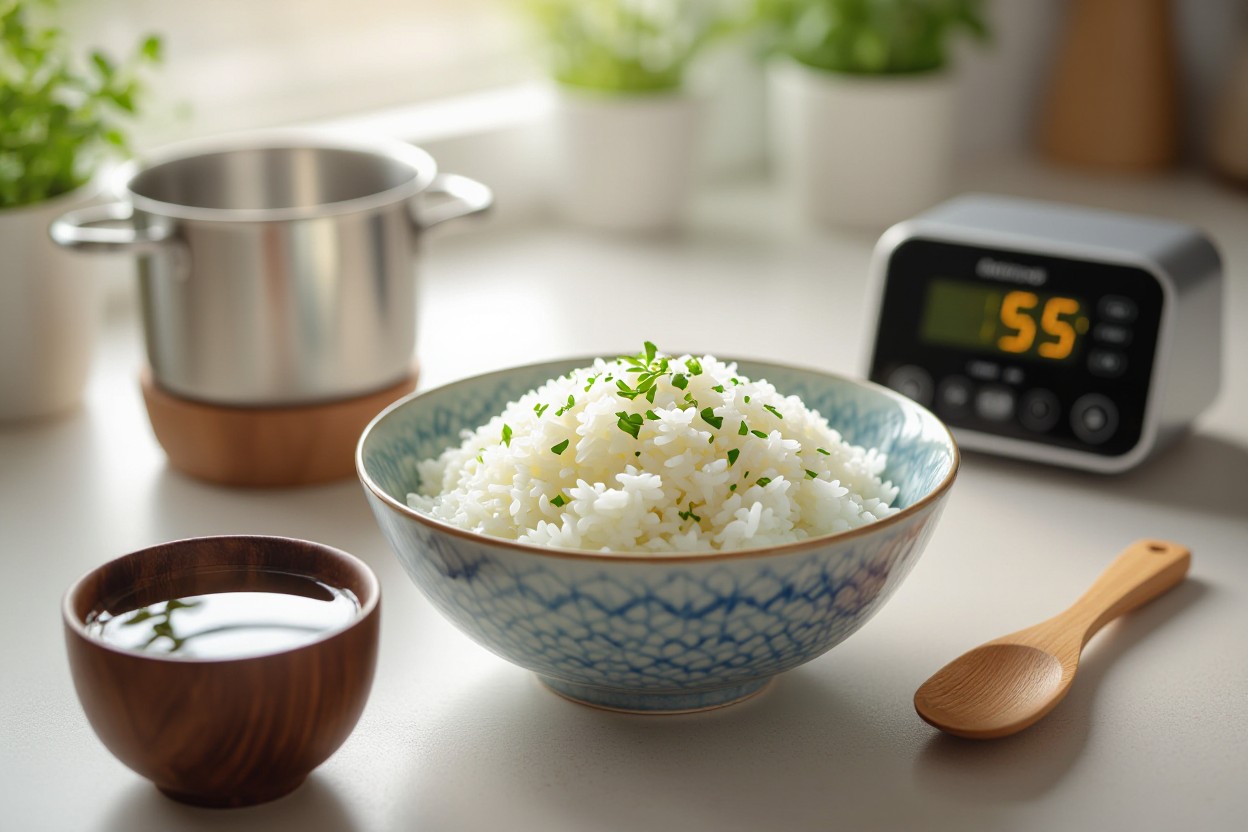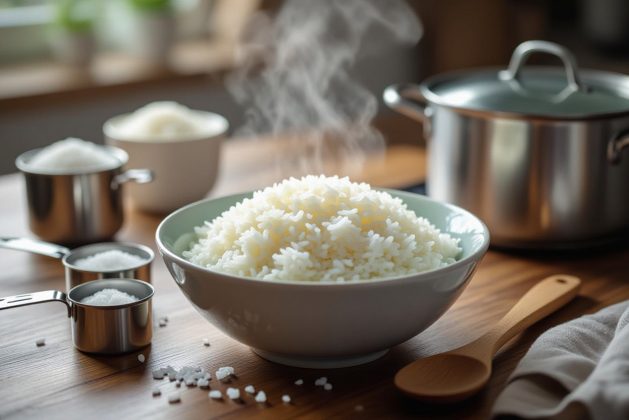Many people struggle with getting rice to turn out just right, either ending up too mushy or undercooked. I understand how frustrating this can be, which is why I’ve developed a straightforward method to help you achieve fluffy, perfectly cooked rice every time. With the right technique and attention to detail, your rice will not only taste better but also enhance your entire meal. Avoid common mistakes like adding too much water, which can lead to a sticky mess, and embrace simple tips that will make cooking rice a seamless part of your kitchen routine.
Choosing the Right Rice for Your Dish
Selecting the appropriate rice type significantly influences your dish’s texture and flavor. For instance, jasmine rice imparts a floral aroma, perfect for Thai cuisine, while basmati offers a nutty taste that complements Indian dishes beautifully. Sushi rice’s sticky nature suits delicate rolls, enhancing their texture. Identifying the specific rice that aligns with your recipe ensures optimal results every time, whether you’re preparing a fragrant pilaf or a creamy risotto.
The Characteristics of Different Rice Varieties
Long-grain rice grains are slender and remain separate after cooking, ideal for dishes like pilaf. Medium-grain rice has a moister, tender texture, perfect for paellas and risottos. Short-grain rice becomes sticky and clumps together, important for sushi and certain puddings. Recognizing these physical traits helps you choose rice that delivers the precise consistency your recipe demands.
Flavor Profiles and Cooking Needs
Each rice variety brings a distinct flavor profile and requires unique cooking methods. Basmati, for example, has a fragrant, slightly nutty flavor and cooks well with steaming techniques, absorbing spices efficiently. In contrast, Arborio rice is creamy and starchy, best suited for slow, attentive stirring to release its starch, creating luxurious risottos.
Diving deeper, I’ve noticed that jasmine rice’s delicate floral scent suits quick steaming, preserving its aromas. On the other hand, sticky rice demands a prolonged soaking period before cooking to achieve that ideal sticky texture vital for many Southeast Asian dishes. Adjusting water ratios is also important; long-grain varieties often need less water than short or medium-grain types. Understanding these nuances allows you to adapt cooking methods precisely, ensuring that flavor and texture complement each other perfectly in your meal.

The Science of Rice and Water Ratios
Getting the balance between rice and water right transforms the texture of your dish from sticky mush to fluffy perfection. Different rice varieties absorb water at varying rates, influenced by grain size and starch content. I’ve noticed that long-grain jasmine rice typically demands less water compared to short-grain sushi rice. Fine-tuning this ratio not only impacts tenderness but also cooks the rice evenly, preventing clumps or watery patches. Experimenting within the standard range of 1:1.5 to 1:2 (rice to water) often guides me to optimal results, but minor adjustments can lead to big improvements in every batch.
Determining the Perfect Water-to-Rice Ratio
One reliable method involves measuring with a rice cup—commonly about 180 ml—and pairing it with the right amount of water. For example, medium-grain rice often requires 1.75 cups of water per cup of rice, which I find yields fluffy grains with a slight bite. Parboiled rice, on the other hand, usually absorbs less water, so sticking closer to a 1:1.25 ratio works better. Also, soaking rice before cooking reduces water needs slightly and shortens cook time by about 10 minutes, a trick I use to control both texture and efficiency.
How Altitude and Rice Age Affect Ratios
Cooking rice at higher altitudes demands additional water—about 5-10% more per 1,000 feet—since lower atmospheric pressure accelerates evaporation. Aging of rice also influences absorption: freshly harvested grains tend to need slightly more water compared to older rice, which dries out over time. Adjusting for these factors can tighten your cooking precision, especially if you source rice from varying harvests or live in mountainous regions.
Altitude impacts the boiling point of water, dropping approximately 1°F for every 500 feet elevation gain, which means rice takes longer to cook and loses moisture faster. For instance, at 5,000 feet, water boils near 203°F instead of 212°F, requiring you to extend simmer time and increase water volume by roughly 10%. Regarding rice age, freshly milled brown rice may absorb up to 10% more water than that stored for six months, due to moisture content and starch crystallization changes over time. Keeping these nuances in mind helps maintain consistent texture whether you’re cooking at sea level or in the Rockies.
Essential Preparation Techniques for Fluffy Rice
Mastering your rice preparation elevates the final texture from ordinary to exceptional. Pre-cooking routines like rinsing and soaking identify and remove surface starch, ensuring grains stay separate rather than clump. These steps also influence water absorption rates and cooking times, contributing directly to the desired fluffiness. I’ve found that adopting these simple techniques beforehand consistently results in tender, perfectly cooked rice that complements any meal.
Rinsing: The Key to Removing Excess Starch
Rinsing rice under cold water multiple times washes away surface starch, which otherwise causes grains to stick together and become gummy. I usually rinse until water runs clear, indicating most starch has been removed. This step allows each grain to cook independently, preserving a light, airy texture. Skipping rinsing often leads to clumping, especially with short-grain varieties.
Soaking: Enhancing Texture and Reducing Cooking Time
Soaking rice for 20 to 30 minutes before cooking softens grains by allowing water to penetrate the kernels evenly. This hydration shortens cooking time and helps achieve a tender, fluffy result. In traditional Indian cooking, soaking basmati rice enhances its signature elongated grain and light texture, demonstrating soaking’s impact beyond mere practicality.
Extending soaking beyond 30 minutes can further soften grains but risks loss of nutrients and overly delicate texture, so I aim for a balance based on rice type and dish requirements. For example, jasmine rice benefits from a brief soak to maintain its subtle aroma and gentle fluffiness, while brown rice demands longer soaking to overcome its fibrous bran layer, ensuring even cooking without toughness.

Mastering Cooking Methods for Optimal Results
Choosing the right cooking method tailors the rice texture perfectly to your preference. I’ve found that understanding the nuances of stovetop, rice cooker, and Instant Pot techniques allows you to achieve consistency every time. Each method manipulates heat and moisture differently, so adapting your approach ensures those fluffy grains remain separate and tender, avoiding the dreaded clumps or soggy patches.
Stovetop Cooking: Steps for Consistent Fluffiness
Start by rinsing rice until the water runs clear, then use a ratio of 1 cup rice to 1.5 cups water for most white varieties. Bring water and rice to a boil, then immediately reduce to a low simmer and cover with a tight-fitting lid. Simmer for 18 minutes without lifting the lid, then let stand off the heat for 10 minutes. Fluff the grains gently with a fork to separate them, ensuring consistent texture throughout the pot.
Rice Cookers and Instant Pots: Hands-Free Perfection
These devices offer precise temperature control and timed cooking cycles that consistently deliver perfectly cooked rice with minimal effort. I’ve noticed their ability to maintain steam pressure seals in moisture, preventing undercooking or drying out, which often happens with stovetop methods. Simply program the cooker, add your rinsed rice and measured water, and walk away—resulting in fluffy, tender rice ready when you are.
Delving deeper into rice cookers and Instant Pots, their advanced sensors monitor internal temperature changes to automatically switch from cooking to warming mode, preventing overcooking. Many models come with presets tailored to different rice types, whether you’re using robust brown rice that requires longer steaming or delicate sushi rice which needs shorter time and precise moisture control. Using these appliances also frees you up during meal prep, reducing kitchen multitasking stress, while delivering consistent results that are challenging to replicate on stovetops.

Troubleshooting Common Rice Mishaps
Occasionally, even with the best intentions, rice can turn out less than perfect. If your rice ends up too sticky or gummy, it’s often due to excess starch or too much water. On the other hand, burnt or undercooked rice typically stems from uneven heat or insufficient liquid. Identifying these common pitfalls and adjusting your technique or timing helps rescue your dish and improves results for the next batch.
Fixing Sticky or Gummy Rice
If your rice clumps together like glue, rinsing it before cooking removes surface starches that cause stickiness. In already gummy rice, gently fluffing with a fork and spreading it out to cool releases trapped moisture. For future batches, lowering the water amount slightly or switching to a rice variety with less amylopectin, such as basmati, prevents overly sticky texture without sacrificing tenderness.
Strategies for Preventing Burnt or Undercooked Rice
Applying medium heat rather than high and ensuring your pot has a tight-fitting lid prevents burning by maintaining consistent steam circulation. Before cooking, check that your water-to-rice ratio suits the rice type — for instance, brown rice needs near double the water of white rice. Stirring the pot during early stages also avoids sticking, while reducing heat after boiling preserves gentle simmer needed for even cooking.
Adding more detail, using a heavy-bottomed pot evenly distributes heat and lowers the risk of hotspots that char the rice. If your burner tends to run hot, switching to low heat just after the water boils with steam trapped inside can mimic professional steamers. Additionally, soaking whole-grain rices for 20-30 minutes pre-cook shortens simmer time, reducing chance of scorching on the bottom.
To wrap up
Now that you have the steps to cook perfect rice every time, I encourage you to practice and adjust based on your specific rice type and preference. By controlling water ratios, cooking time, and allowing the rice to rest, you’re well equipped to achieve fluffy, separate grains with ease. With this simple guide, your rice will consistently turn out well, enhancing any meal you prepare. Trust your instincts, and soon you’ll master this crucial kitchen skill.





Leave a comment